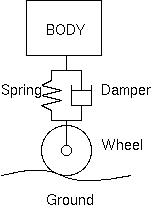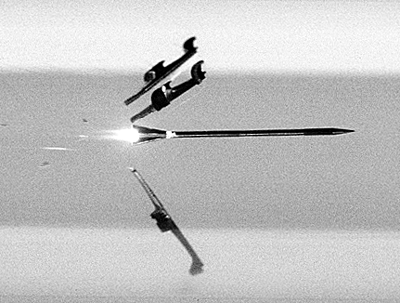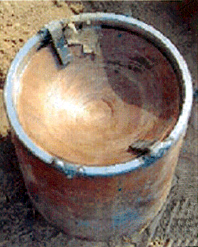|
Type 10
The is a fourth generation main battle tank of JSDF produced by Mitsubishi Heavy Industries for the Japanese Ground Self Defense Force, entering service in 2012. Compared with other currently-serving main battle tanks in the JGSDF, the Type 10 has been equipped with enhancements in its capability to respond to anti-tank warfare and other contingencies. Overview The TK-X (MBT-X) project aimed to produce the new Type 10 main battle tank, to replace or complement the existing Type 74 and Type 90 main battle tanks that are currently in service with the Japan Ground Self Defense Force. Development began in the 1990s, and production was expected to start in 2010–2011. A prototype was revealed on February 13, 2008 at the Technology Research and Development Institute (TRDI) in Sagamihara. Heavy emphasis was placed on C4I capabilities as well as on performance, firepower, protection and mobility. Design Development history In the early 2000s, Japan decided to update its tank forc ... [...More Info...] [...Related Items...] OR: [Wikipedia] [Google] [Baidu] |
Main Battle Tank
A main battle tank (MBT), also known as a battle tank or universal tank, is a tank that fills the role of armor-protected direct fire and maneuver in many modern armies. Cold War-era development of more powerful engines, better suspension systems and lighter-weight composite armor allowed the design of a tank that had the firepower of a super-heavy tank, the armor protection of a heavy tank, and the mobility of a light tank, in a package with the weight of a medium tank. Through the 1960s and 1970s, the MBT replaced almost all other types of tanks, leaving only some specialist roles to be filled by lighter designs or other types of armored fighting vehicles. Main battle tanks are a key component of modern armies.#House1984, House (1984), ''Toward Combined Arms Warfare: A Survey of 20th-Century Tactics, Doctrine, and Organization'' Modern MBTs seldom operate alone, as they are organized into armoured units that include the support of infantry, who may accompany the tanks in inf ... [...More Info...] [...Related Items...] OR: [Wikipedia] [Google] [Baidu] |
List Of Modern Equipment Of The Japan Ground Self-Defense Force
The following is a list of equipment currently in service with the Japan Ground Self-Defense Force. Uniforms Camouflage patterns * See also: List of military clothing camouflage patterns#Asia A–M ;Other equipment Rations * Type I Combat Rations – ''Can-meshi'' (canned type ration packs)Ration Packs for Japanese Forces ''Japan Security Watch'' * Type II Combat Rations – ''Pack-meshi'' (boiled in bag type ration packs) * – |
Hokkaido
is Japan's second largest island and comprises the largest and northernmost prefecture, making up its own region. The Tsugaru Strait separates Hokkaidō from Honshu; the two islands are connected by the undersea railway Seikan Tunnel. The largest city on Hokkaidō is its capital, Sapporo, which is also its only ordinance-designated city. Sakhalin lies about 43 kilometers (26 mi) to the north of Hokkaidō, and to the east and northeast are the Kuril Islands, which are administered by Russia, though the four most southerly are claimed by Japan. Hokkaidō was formerly known as ''Ezo'', ''Yezo'', ''Yeso'', or ''Yesso''. Nussbaum, Louis-Frédéric. (2005). "Hokkaidō" in Although there were Japanese settlers who ruled the southern tip of the island since the 16th century, Hokkaido was considered foreign territory that was inhabited by the indigenous people of the island, known as the Ainu people. While geographers such as Mogami Tokunai and Mamiya Rinzō explored the isla ... [...More Info...] [...Related Items...] OR: [Wikipedia] [Google] [Baidu] |
Active Suspension
An active suspension is a type of automotive suspension on a vehicle. It uses an onboard system to control the vertical movement of the vehicle's wheels relative to the chassis or vehicle body rather than the passive suspension provided by large springs where the movement is determined entirely by the road surface. Active suspensions are divided into two classes: real active suspensions, and adaptive or semi-active suspensions. While semi-adaptive suspensions only vary shock absorber firmness to match changing road or dynamic conditions, active suspensions use some type of actuator to raise and lower the chassis independently at each wheel. These technologies allow car manufacturers to achieve a greater degree of ride quality and car handling by keeping the tires perpendicular to the road in corners, allowing better traction and control. An onboard computer detects body movement from sensors throughout the vehicle and, using that data, controls the action of the active and semi-act ... [...More Info...] [...Related Items...] OR: [Wikipedia] [Google] [Baidu] |
Autoloader
An autoloader or auto-loader is a mechanical aid or replacement for the personnel that load ordnance into crew-served weapons without being an integrated part of the gun itself. The term is generally only applied to larger weapons, such as naval weapons, tanks, and artillery; that would otherwise have a dedicated person or persons loading them. An autoloader extracts a shell and propellant charge from the ammunition storage rack/compartment and loads it into a magazine or belt, if the gun has one, or directly into the chamber of the gun if it does not. It often replaces a human loader. Automation can streamline and speed the loading process, resulting in a more effective design. With a smaller crew, the vehicle can also be made smaller inside. This reduces the amount of surface area that needs to be armored, meaning the vehicle, especially the turret, can be smaller and lighter. With a lower profile, the tank is harder both to spot and to hit. History Autoloaders were d ... [...More Info...] [...Related Items...] OR: [Wikipedia] [Google] [Baidu] |
Royal United Services Institute
The Royal United Services Institute (RUSI, Rusi), registered as Royal United Service Institute for Defence and Security Studies and formerly the Royal United Services Institute for Defence Studies, is a British defence and security think tank. It was founded in 1831 by the Duke of Wellington, Sir Arthur Wellesley. The current President of RUSI is the Duke of Kent and its Director-General is Karin von Hippel. History RUSI was founded in 1831 – making it the oldest defence and security think tank in the world – at the initiative of the Duke of Wellington. Its original mission was to study naval and military science. The Duke of Wellington spearheaded the establishment of RUSI in a letter to ''Colbourn's United Service Journal'' arguing that "a United Service Museum" should be formed, managed entirely by naval and military officers, and under patronage of the monarch, then King George IV, and the commanders-in-chief of the armed forces. Such an institution woul ... [...More Info...] [...Related Items...] OR: [Wikipedia] [Google] [Baidu] |
120×570mm NATO
120×570mm NATO tank ammunition (4.7 inch) also known as 120×570R is a common, NATO-standard (STANAG 4385), tank gun semi-combustible cartridge used by 120mm smoothbore guns, superseding the earlier 105×617mmR cartridge used in NATO-standard rifled tank guns. History The 120×570R cartridge was originally intended for the German Rh-120 smoothbore gun but an interoperability agreement signed between West Germany and France in April1979, followed in September1981 by a project to install the M256 120 mm smoothbore gun on future M1A1 Abrams tanks made it a NATO standard. Characteristics The 120×570mm are one-piece ammunition with semi-combustible cartridge cases. These incorporate a short, metallic stub case with an elastomeric sealing ring which allows the use of a normal sliding wedge type of breech and at the same time significantly reduces the weight of the rounds. Thus, a round of 120 mm Rheinmetall APFSDS ammunition has a mass of 19.8 kg, which is lit ... [...More Info...] [...Related Items...] OR: [Wikipedia] [Google] [Baidu] |
Armour-piercing Fin-stabilized Discarding-sabot
Armour-piercing fin-stabilized discarding sabot (APFSDS), long dart penetrator, or simply dart ammunition, is a type of kinetic energy penetrator ammunition used to attack modern vehicle armour. As an armament for main battle tanks, it succeeds Armour-Piercing Discarding Sabot (APDS) ammunition, which is still used in small or medium caliber weapon systems. Improvements in powerful automotive propulsion and suspension systems following World War II allowed modern main battle tanks to incorporate progressively thicker and heavier armour protection systems, while maintaining considerable maneuverability and speed on the battlefield. As a result, achieving deep armour penetration with gun-fired ammunition required even longer anti-armour projectiles fired at even higher muzzle velocity than could be achieved with stubbier APDS projectiles. History Armour-piercing discarding sabot (APDS) was initially the main design of the kinetic energy (KE) penetrator. The logical progression ... [...More Info...] [...Related Items...] OR: [Wikipedia] [Google] [Baidu] |
Leopard 2
The Leopard 2 is a 3rd generation main battle tank originally developed by Krauss-Maffei in the 1970s for the West German army. The tank first entered service in 1979 and succeeded the earlier Leopard 1 as the main battle tank of the West German Army. It is armed with a 120 mm smoothbore cannon, and is powered by a V-12 twin-turbo diesel engine. Various versions have served in the armed forces of Germany and 13 other European countries, as well as several non-European nations, including Canada, Chile, Indonesia, and Singapore. The Leopard 2 was used in Kosovo with the German Army, in Afghanistan with the Dutch, Danish and Canadian contributions to the International Security Assistance Force, and saw action in Syria with the Turkish Armed Forces. There are two main development batches of the tank: the original models up to Leopard 2A4, which have vertically faced turret armour, and the improved batch, namely the Leopard 2A5 and newer versions, which have angled arrow-shape ... [...More Info...] [...Related Items...] OR: [Wikipedia] [Google] [Baidu] |
Rheinmetall 120 Mm Gun
The Rheinmetall Rh-120 is a 120 mm smoothbore tank gun designed and produced in former West Germany by the Rheinmetal-DeTec AG company, it was developed in response to Soviet advances in armour technology and development of new armoured threats. Production began in 1974, with the first version of the gun, known as the ''L/44'' as it was 44 calibres long, used on the German Leopard 2 tank and soon produced under license for the American M1A1 Abrams and other tanks. The gun has a length of , and the gun system weighs approximately . By 1990, the L/44 was not considered powerful enough to defeat future Soviet armour, which stimulated an effort by Rheinmetall to develop a better main armament. This first involved a tank gun named ''Neue Panzerkanone 140'' ('new tank gun 140'), but later turned into a compromise which led to the development of an advanced 120 mm gun, the L/55, based on the same internal geometry as the L/44 and installed in the same breech and mount. The L ... [...More Info...] [...Related Items...] OR: [Wikipedia] [Google] [Baidu] |
Explosively Formed Penetrator
An explosively formed penetrator (EFP), also known as an explosively formed projectile (EFP), a self-forging warhead, or a self-forging fragment, is the product of a shaped charge designed to penetrate armor effectively. As the name suggests, the effect of the explosive charge is to deform a metal plate into a jet, slug or rod shape and accelerate it toward a target. They were first developed as oil well perforators by American oil companies in the 1930s, and were deployed as weapons in World War II. Difference from conventional shaped charges A shaped charge generally has a metal liner that is forced by an explosive blast into a metal jet or slug able to penetrate thick steel armor and knock out vehicles. A disadvantage of this arrangement is that the jet of metal loses effectiveness the further it travels, as it breaks up into disconnected particles that drift out of alignment. An EFP operates on the principle designed to form a distinct projectile (slug or jet), permitting ... [...More Info...] [...Related Items...] OR: [Wikipedia] [Google] [Baidu] |
Sagamihara
is a city in Kanagawa Prefecture, Japan. , the city has an estimated population of 723,470, with 334,812 households, and a population density of 1,220 persons per km2. The total area of the city is . Sagamihara is the third-most-populous city in the prefecture, after Yokohama and Kawasaki, and the fifth most populous suburb of the Greater Tokyo Area. Its northern neighbor is Machida, with which a cross-prefectural merger has been proposed. On April 1, 2010, the city became the 19th city designated by government ordinance. As a result of this, three wards were established: Midori-ku, Chūō-ku and Minami-ku. Geography Sagamihara covers a large area of northwestern Kanagawa Prefecture. The main areas of commercial activity in Sagamihara are located near Hashimoto Station on the JR East Yokohama Line and Keio Sagamihara Line; Sagamihara Station on the Yokohama Line; and Sagami-Ōno Station on the Odakyu Odawara Line. Western Sagamihara is within the Tanzawa Mountains. Wa ... [...More Info...] [...Related Items...] OR: [Wikipedia] [Google] [Baidu] |




.jpg)




